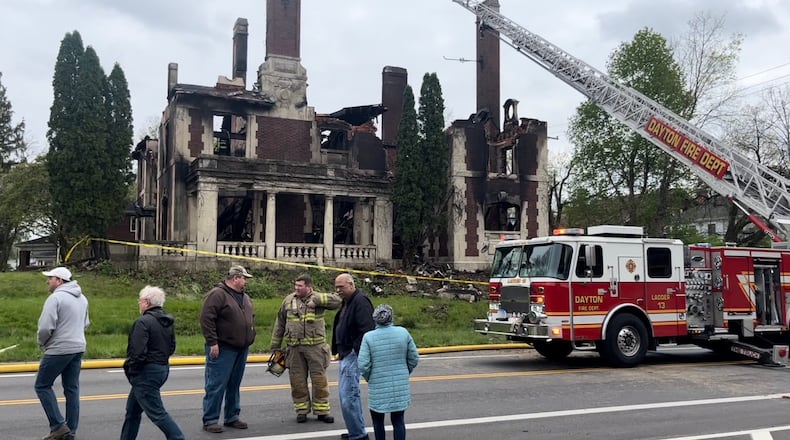That ruling is “due to the extent of the damage at the incident site, and lack of other available evidence,” Fire Capt. Brad French said in an email to the Dayton Daily News.
Property loss at the site listed on the National Register of Historic Places was estimated at $245,950, with about $10,000 in contents destroyed, according to the fire department’s report released Tuesday.
Credit: JIM NOELKER
Credit: JIM NOELKER
“If additional information becomes available, the Dayton Fire Department will re-open the investigation accordingly,” French added.
Dayton fire officials responded to the site around 3 a.m. April 23 after it was fully engulfed, and officials said the intensity of the heat prevented crews from entering. Officials said the fire likely made the mansion a total loss.
The area of origin, the heat source and contributing factors are all listed as “undetermined,” according to the report.
“All floors” of the three-story stone/steel structure were “fully involved with fire” when crews arrived, the document states.
All crews were “advised to STAY CLEAR of the collapse zone (all sides) due to falling roof tiles, bricks, and LARGE ornamental stonework surrounding the upper perimeter of the structure,” the report states.
“Due to the defensive nature of this fire, heavy volume of fire and length of burn time, and large footprint, crews were unable to safely conduct any searches of this structure from the interior or anywhere close to the exterior collapse zone,” according to the report.
Eleven fire trucks/apparatus and 30 personnel responded to the scene, with the last crew leaving more than eight hours and 30 minutes after the first one arrived, according to the report.
The fire occurred a few weeks before the property was set to be auctioned at a sheriff’s sale.
No bids were submitted for that initial auction in May, officials said. Earlier this month, a bid of $41,000 — just above the minimum required offer — was placed on the mansion.
The mansion was added to the National Register of Historic Places individually in 1979 and again in 1984 as part of the Dayton View Historic District, according to Preservation Dayton.
The Flemish Chateauesque-style building was built around 1912 for Louis Traxler — president of the Traxler Department Store — and Adeline Traxler, and was reportedly designed by Harvey Hiestand, founder of Miami University’s College of Architecture, according to Preservation Dayton.
About the Author


